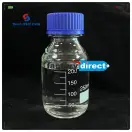-
Categories
-
Pharmaceutical Intermediates
-
Active Pharmaceutical Ingredients
-
Food Additives
- Industrial Coatings
- Agrochemicals
- Dyes and Pigments
- Surfactant
- Flavors and Fragrances
- Chemical Reagents
- Catalyst and Auxiliary
- Natural Products
- Inorganic Chemistry
-
Organic Chemistry
-
Biochemical Engineering
- Analytical Chemistry
-
Cosmetic Ingredient
- Water Treatment Chemical
-
Pharmaceutical Intermediates
Promotion
ECHEMI Mall
Wholesale
Weekly Price
Exhibition
News
-
Trade Service
First: choose the appropriate pesticide varieties
.
Use high-efficiency, low-toxicity, and low-residue pesticides.
In order to prevent excessive pesticide content, low-toxic pesticides and biological pesticides that are safe for humans and animals must be selected in the production.
The use of highly toxic and high-residue pesticides is prohibited
.
???? Second: master the critical period of medication
.
Using the same pesticide at different times will have very significant differences in the control effects of the control objects and the impact on the crops and the surrounding environment
.
Choosing the most appropriate time is very important to improve the control effect and reduce the adverse effects
.
According to the occurrence rules and characteristics of pests and diseases, pesticides should be applied during the critical period
.
???? Third: master the appropriate dosage
.
Pesticides must have a certain dosage to have a satisfactory control effect, but it is not that the larger the dosage, the better
.
It is very important to master the dosage.
Different pesticides have different dosages.
???? Fourth: adopt appropriate medication methods
.
Spraying method, dusting method, spreading method, smog method, fumigation method, poisonous soil method, soil treatment method, seed treatment method, injection method, bandaging method, poison bait method and other pesticide application methods should be based on the harmful methods of diseases, insects and weeds.
The location of occurrence and the characteristics of pesticides can be selected "flexibly", not "the same"
.
???? Fifth: master the safety interval
.
The safe interval is the time between the last pesticide application and harvest.
Different pesticides have different requirements due to their stability and usage.
Short interval and insufficient pesticide degradation time will cause excessive residues
.
???? Sixth: alternate medication
.
???? Seventh: adopt scientific cultivation measures
.
Scientific cultivation measures are the most effective measures to reduce the amount of pesticides, as well as the most effective measures to reduce pesticide residues in agricultural products
.
.
Use high-efficiency, low-toxicity, and low-residue pesticides.
In order to prevent excessive pesticide content, low-toxic pesticides and biological pesticides that are safe for humans and animals must be selected in the production.
The use of highly toxic and high-residue pesticides is prohibited
.
???? Second: master the critical period of medication
.
Using the same pesticide at different times will have very significant differences in the control effects of the control objects and the impact on the crops and the surrounding environment
.
Choosing the most appropriate time is very important to improve the control effect and reduce the adverse effects
.
According to the occurrence rules and characteristics of pests and diseases, pesticides should be applied during the critical period
.
???? Third: master the appropriate dosage
.
Pesticides must have a certain dosage to have a satisfactory control effect, but it is not that the larger the dosage, the better
.
It is very important to master the dosage.
Different pesticides have different dosages.
???? Fourth: adopt appropriate medication methods
.
Spraying method, dusting method, spreading method, smog method, fumigation method, poisonous soil method, soil treatment method, seed treatment method, injection method, bandaging method, poison bait method and other pesticide application methods should be based on the harmful methods of diseases, insects and weeds.
The location of occurrence and the characteristics of pesticides can be selected "flexibly", not "the same"
.
???? Fifth: master the safety interval
.
The safe interval is the time between the last pesticide application and harvest.
Different pesticides have different requirements due to their stability and usage.
Short interval and insufficient pesticide degradation time will cause excessive residues
.
???? Sixth: alternate medication
.
???? Seventh: adopt scientific cultivation measures
.
Scientific cultivation measures are the most effective measures to reduce the amount of pesticides, as well as the most effective measures to reduce pesticide residues in agricultural products
.







